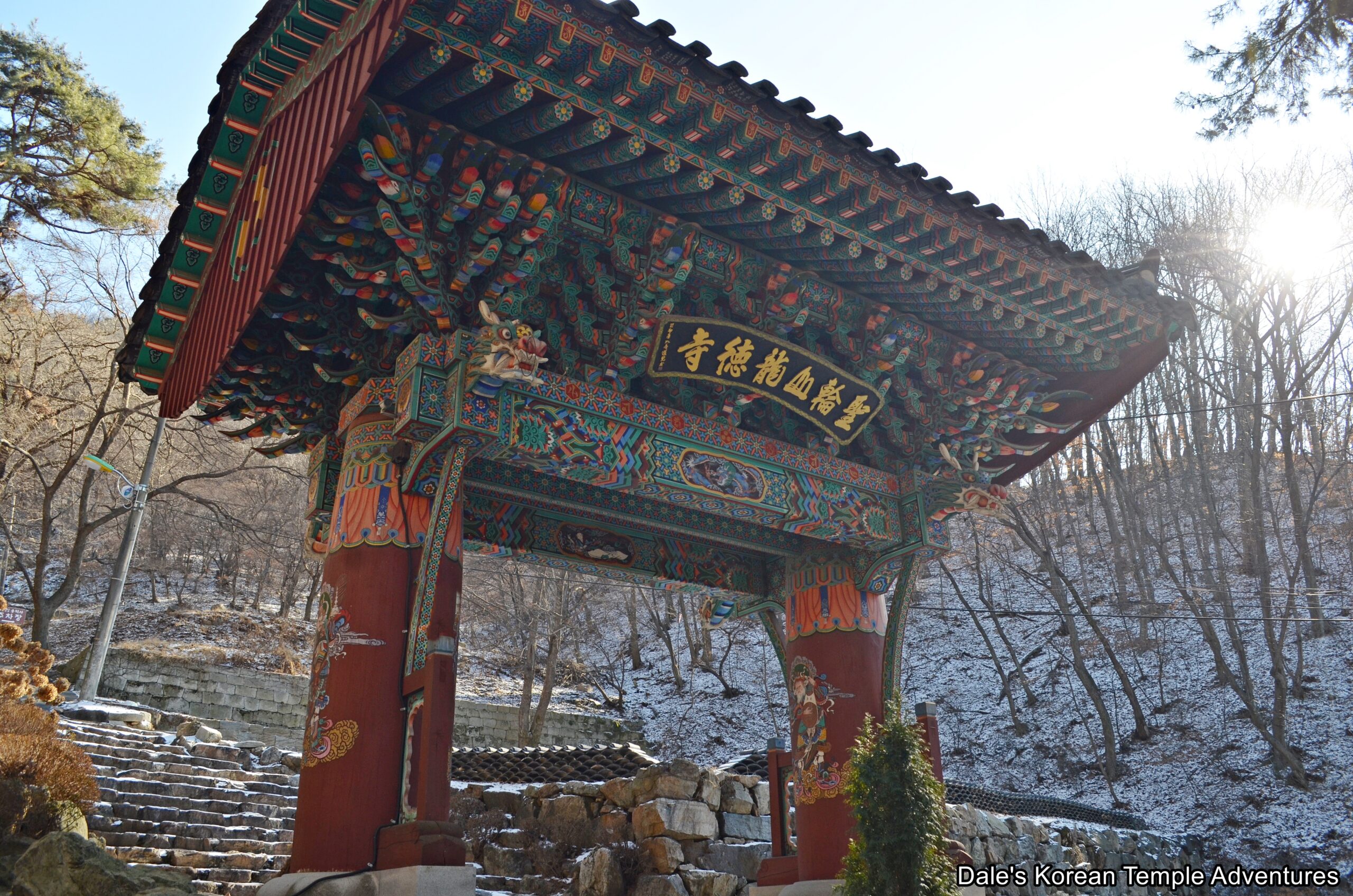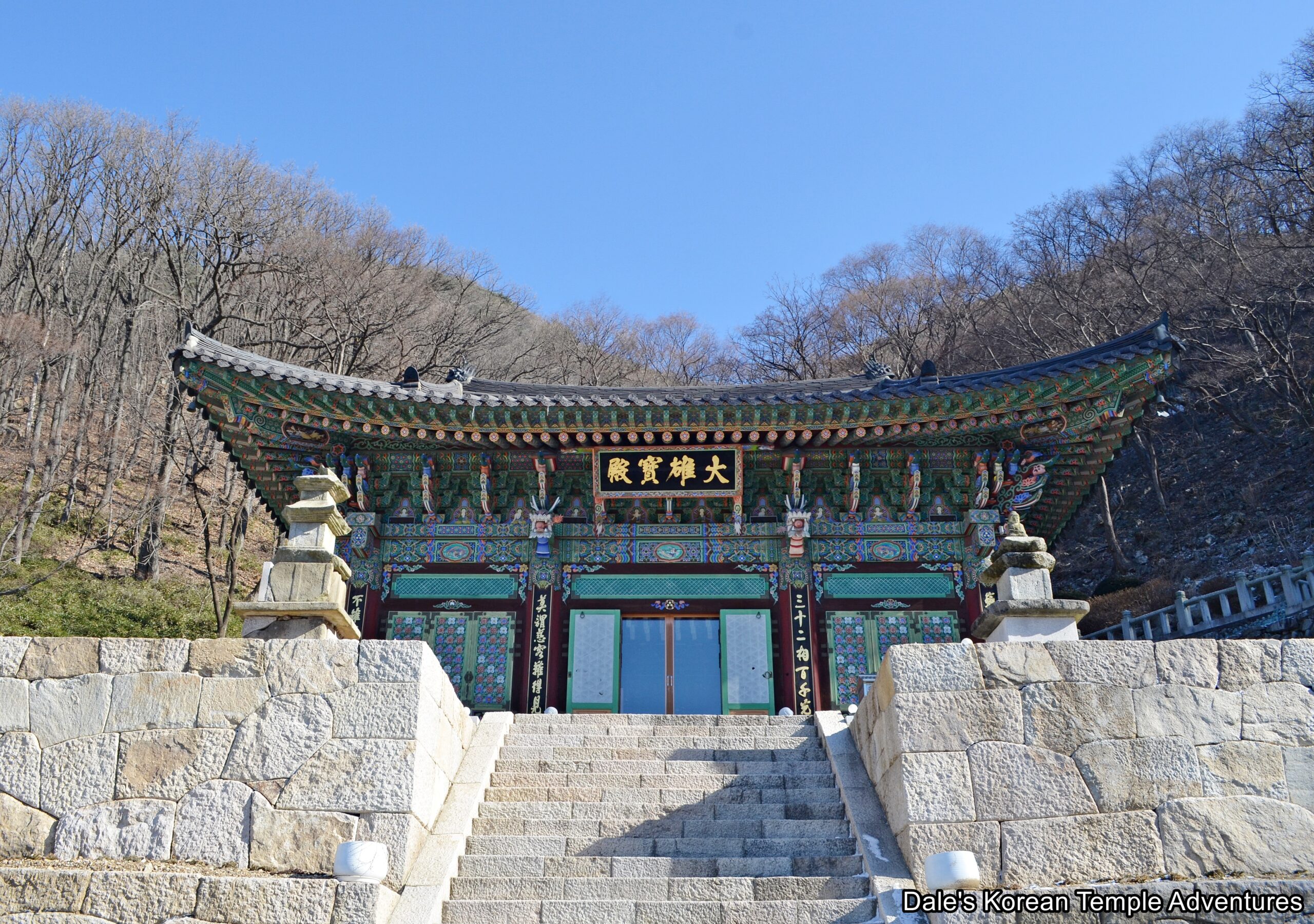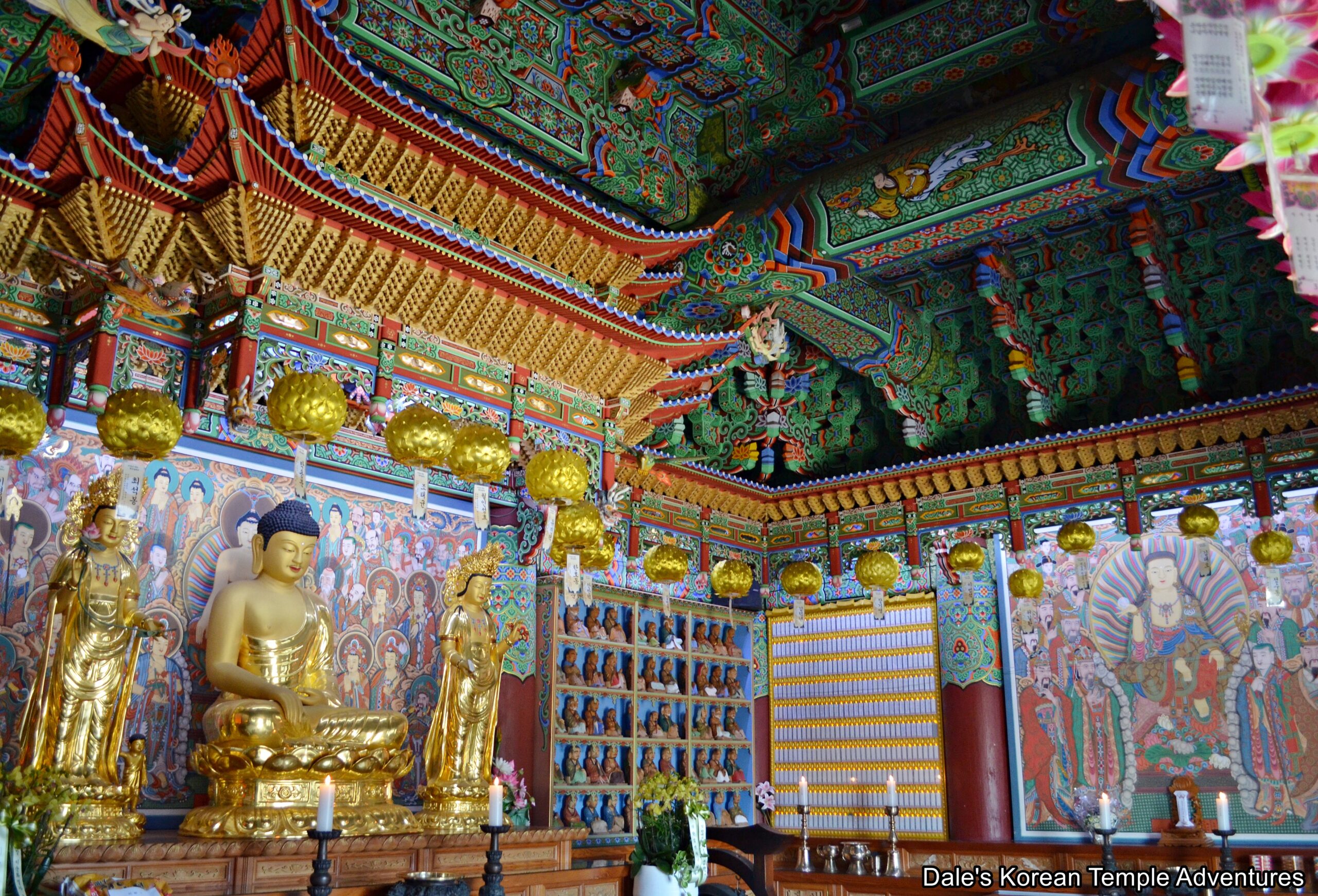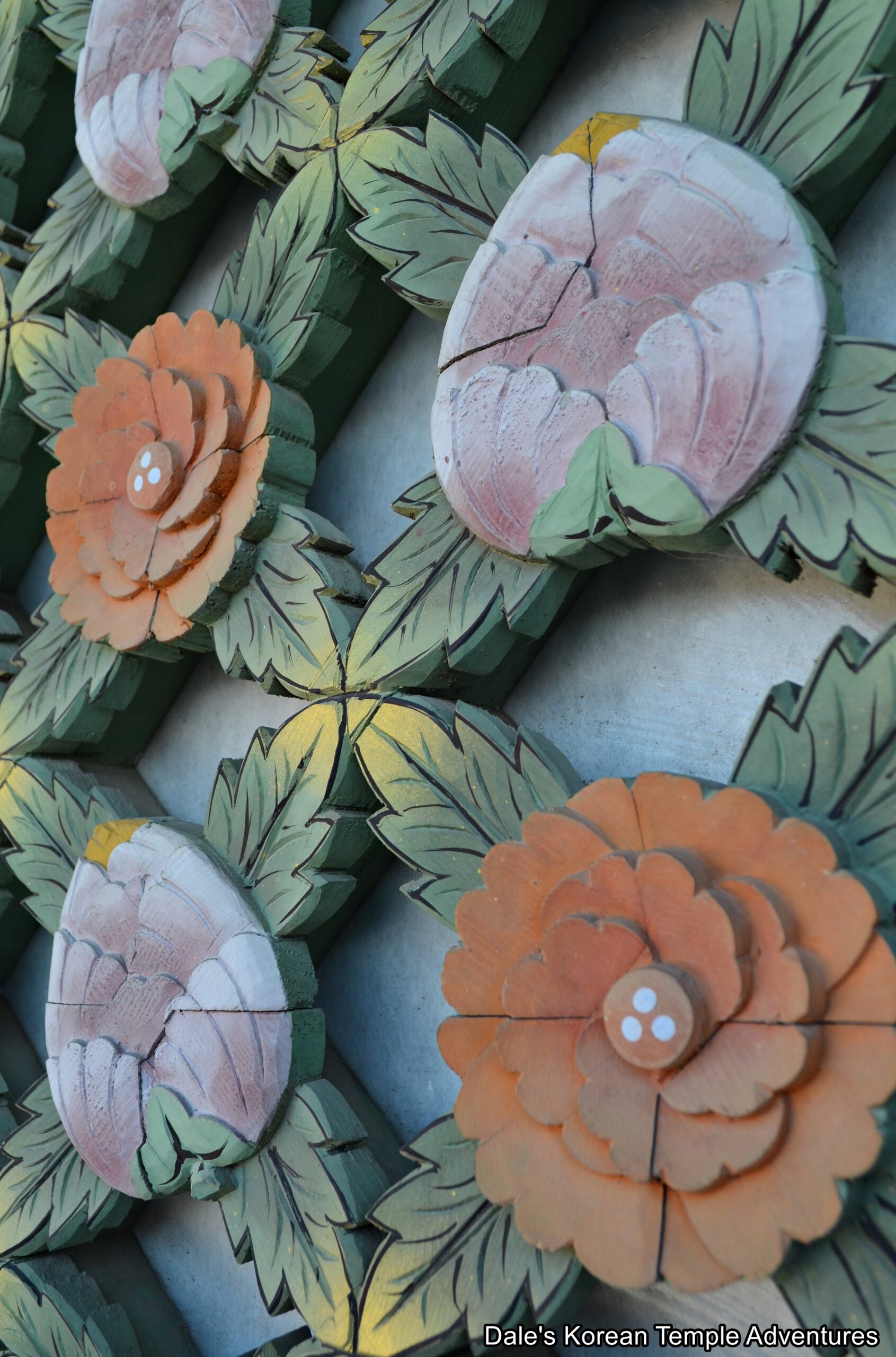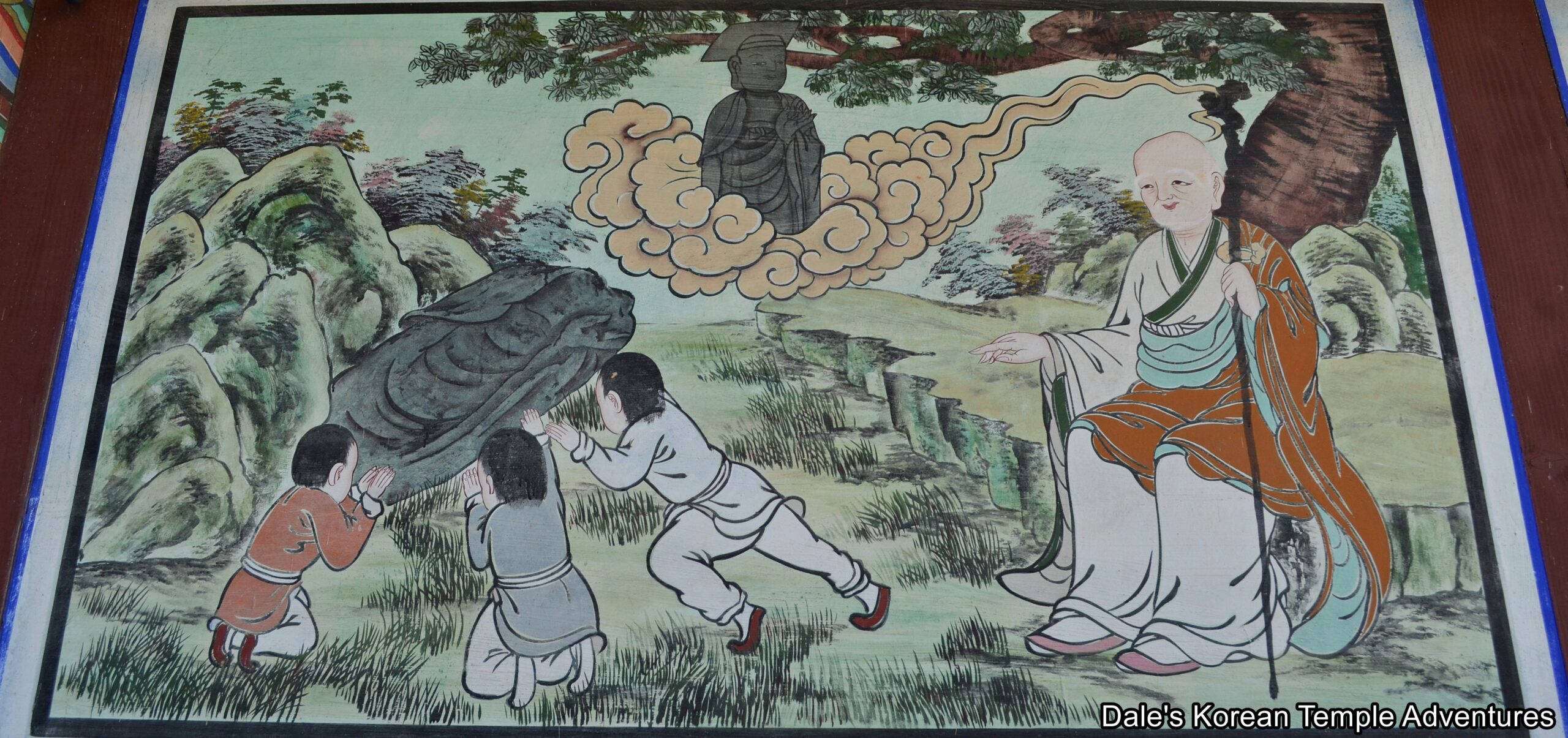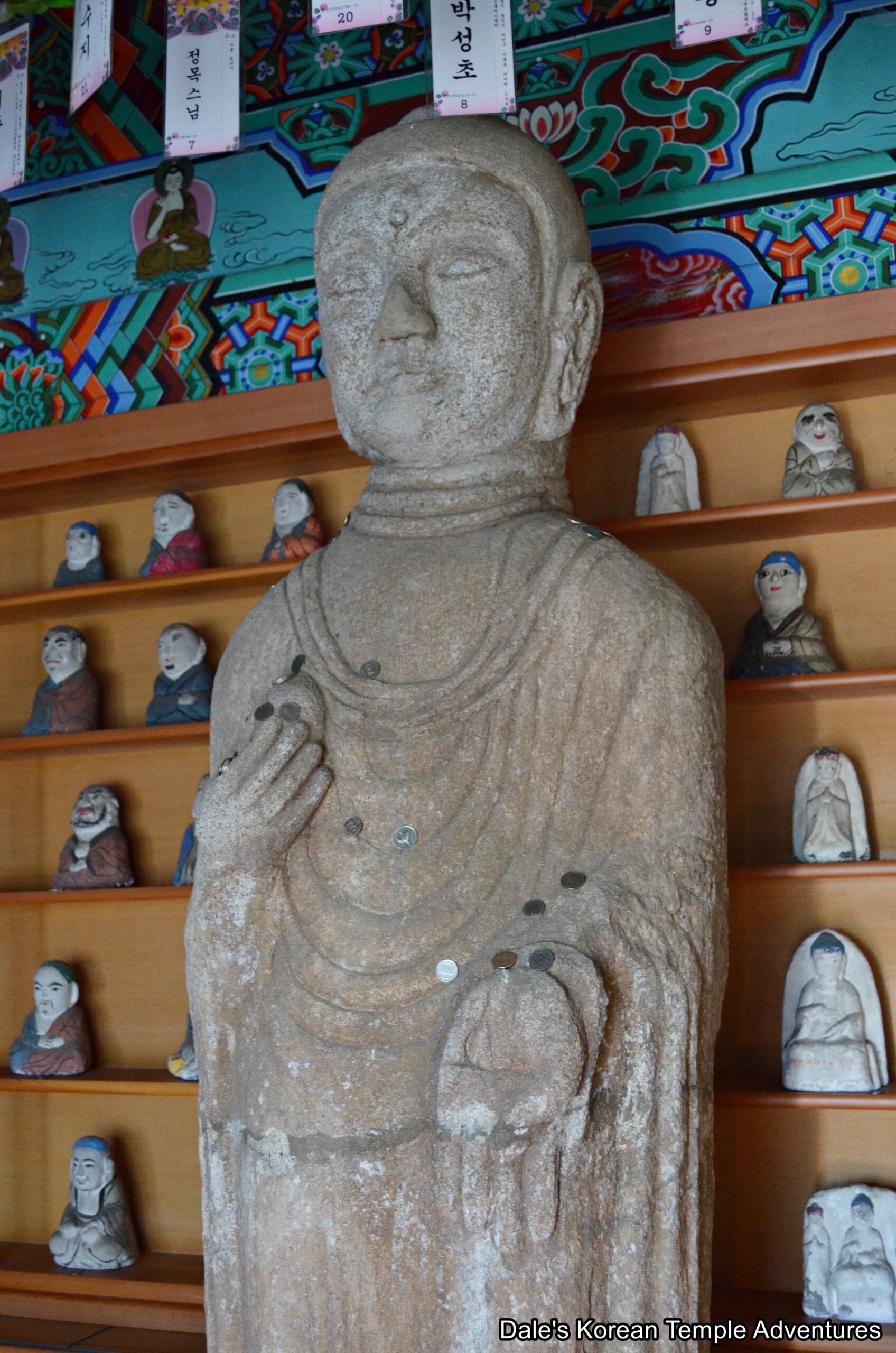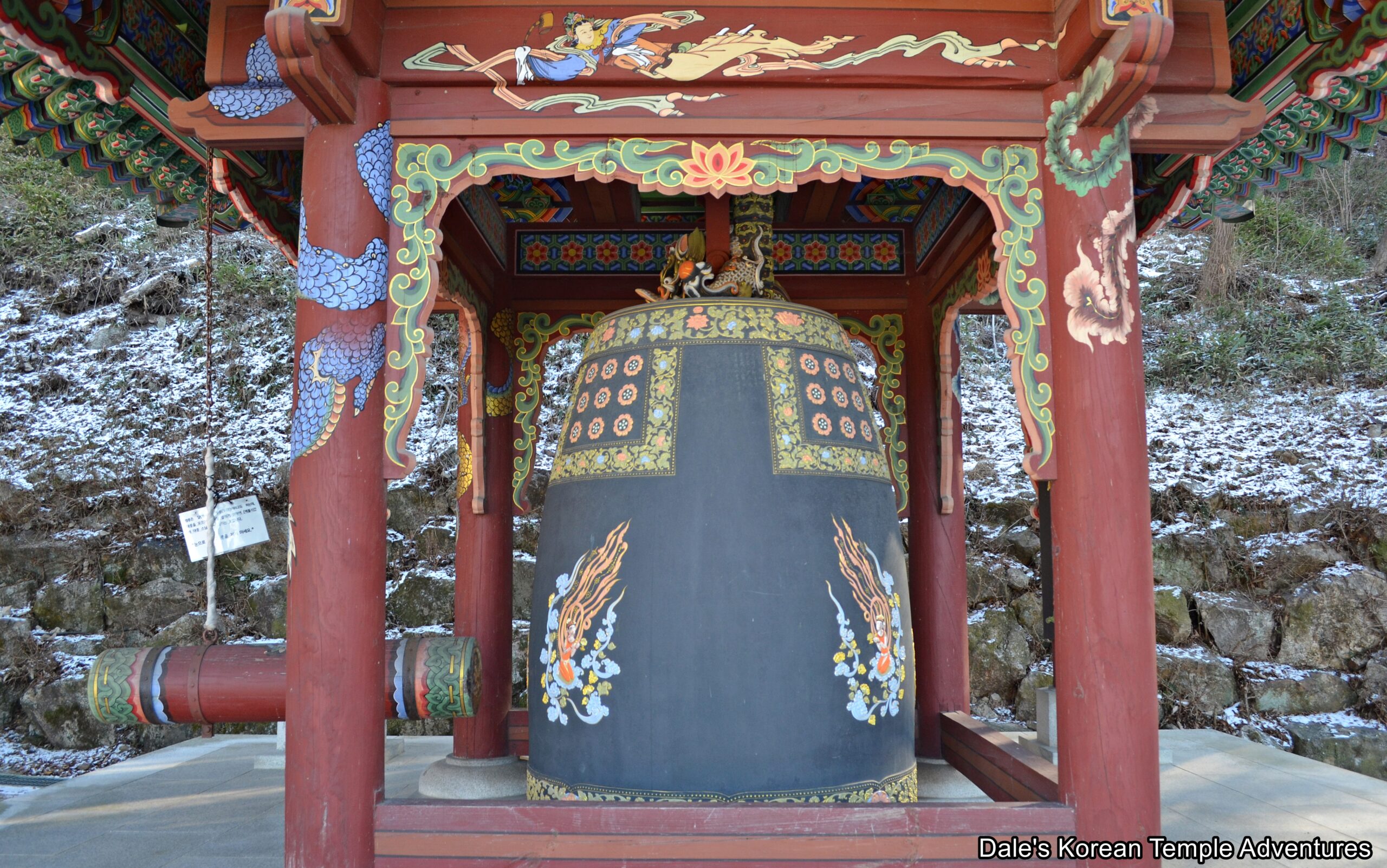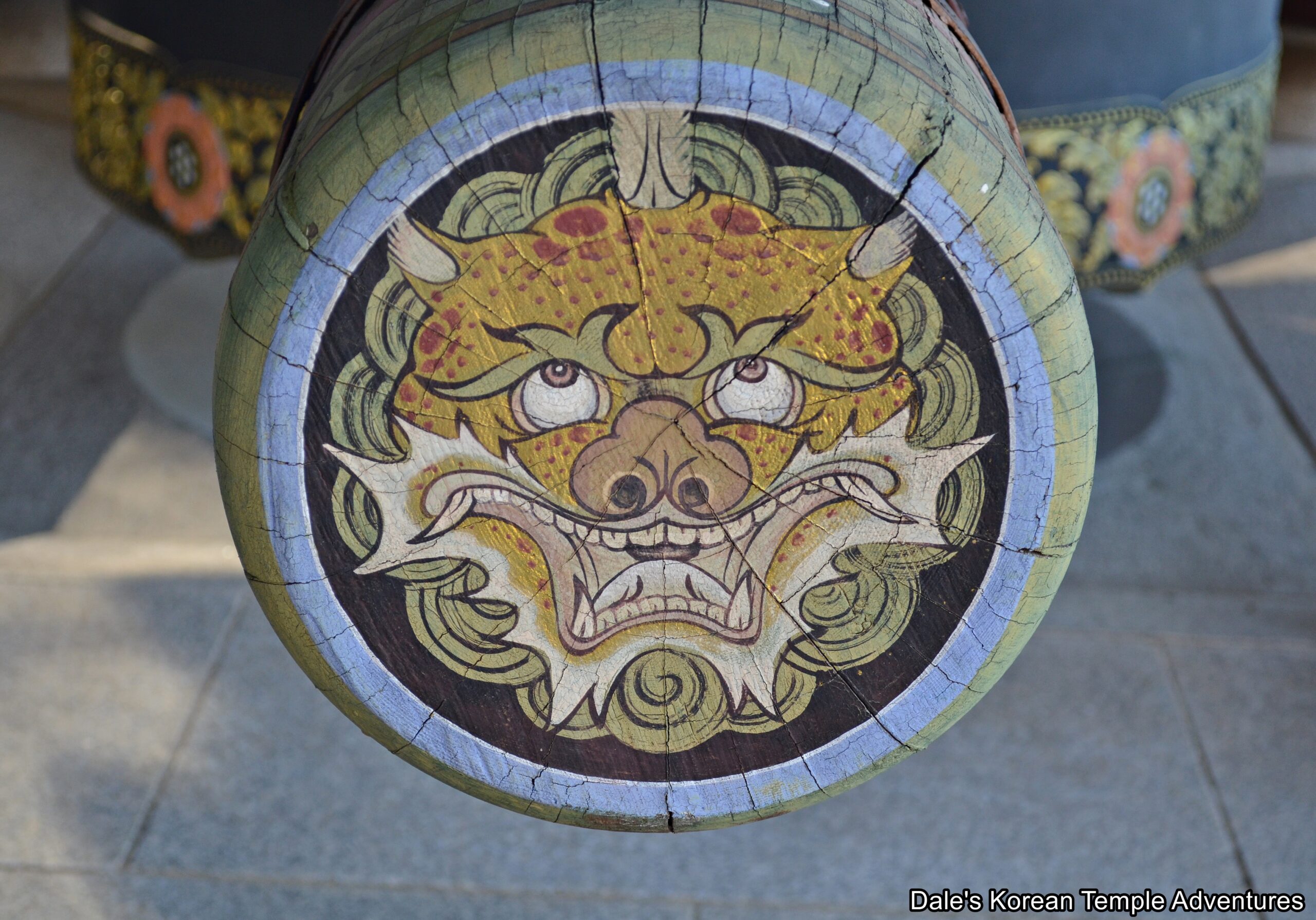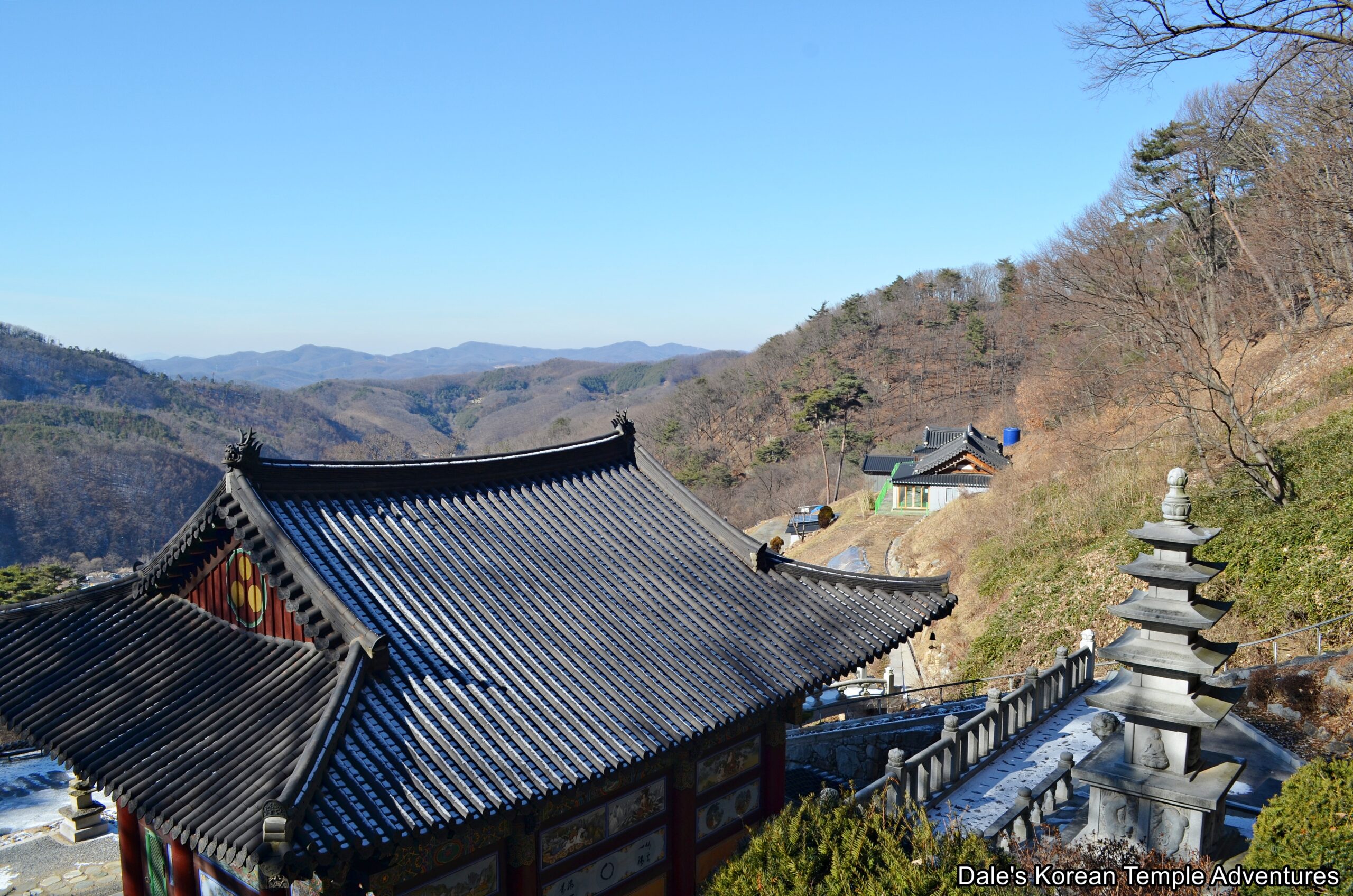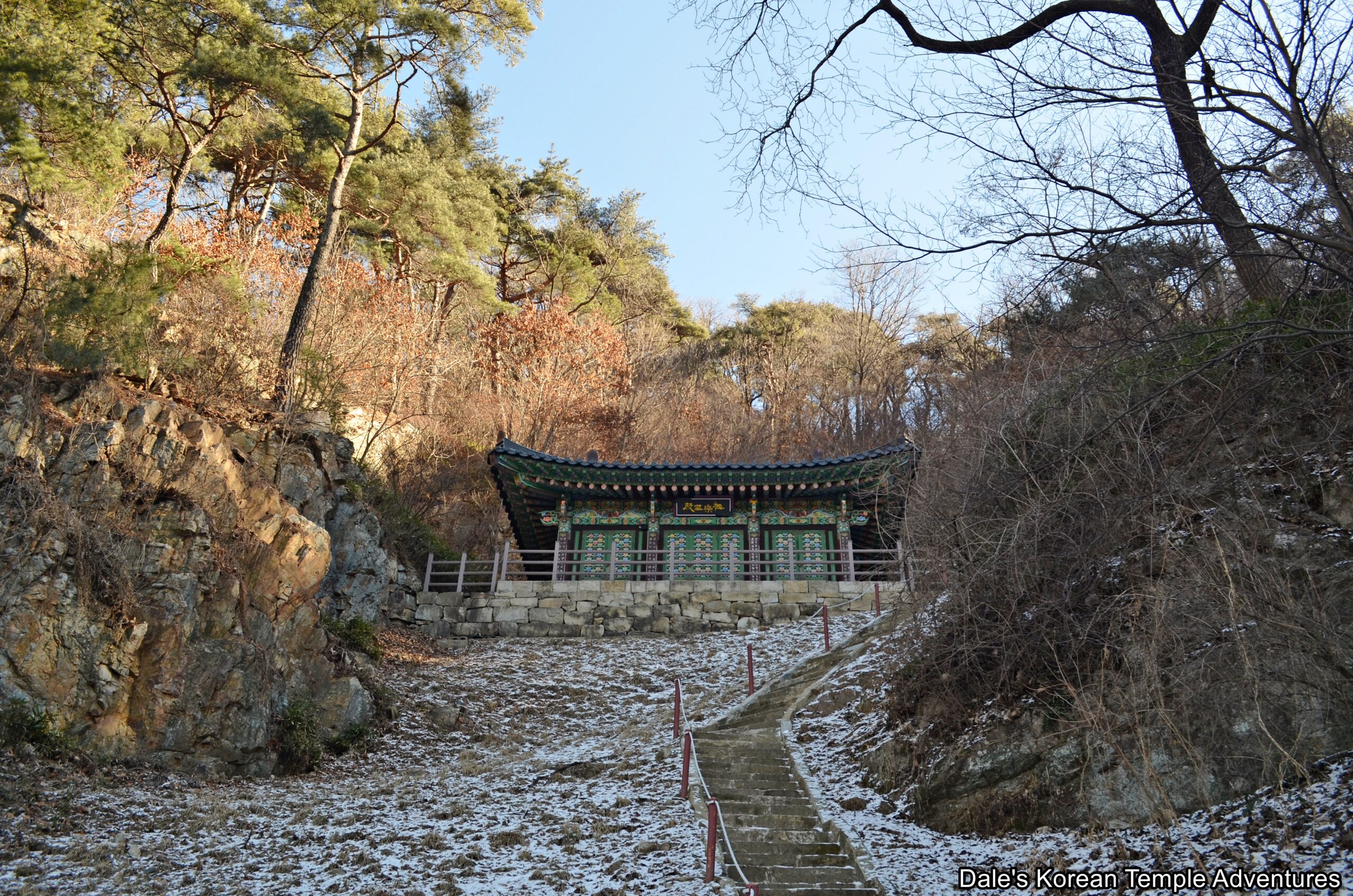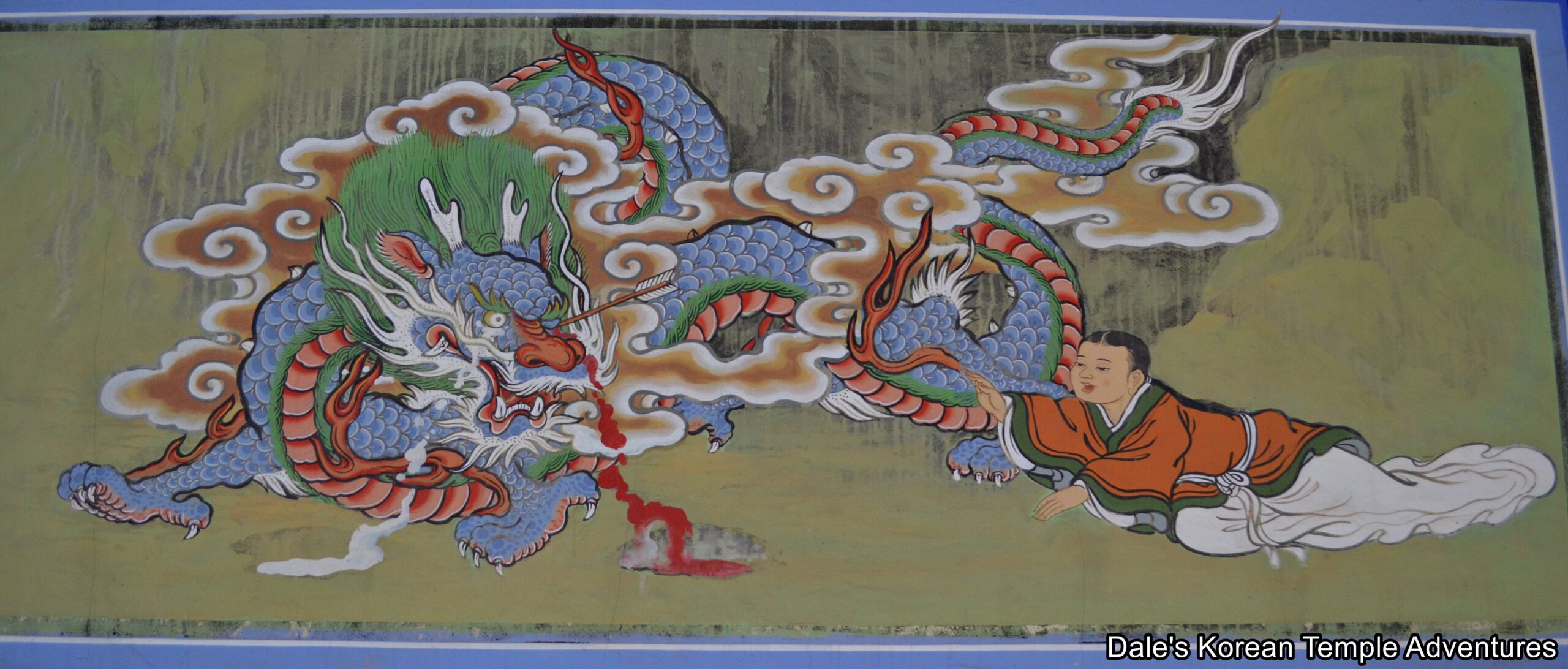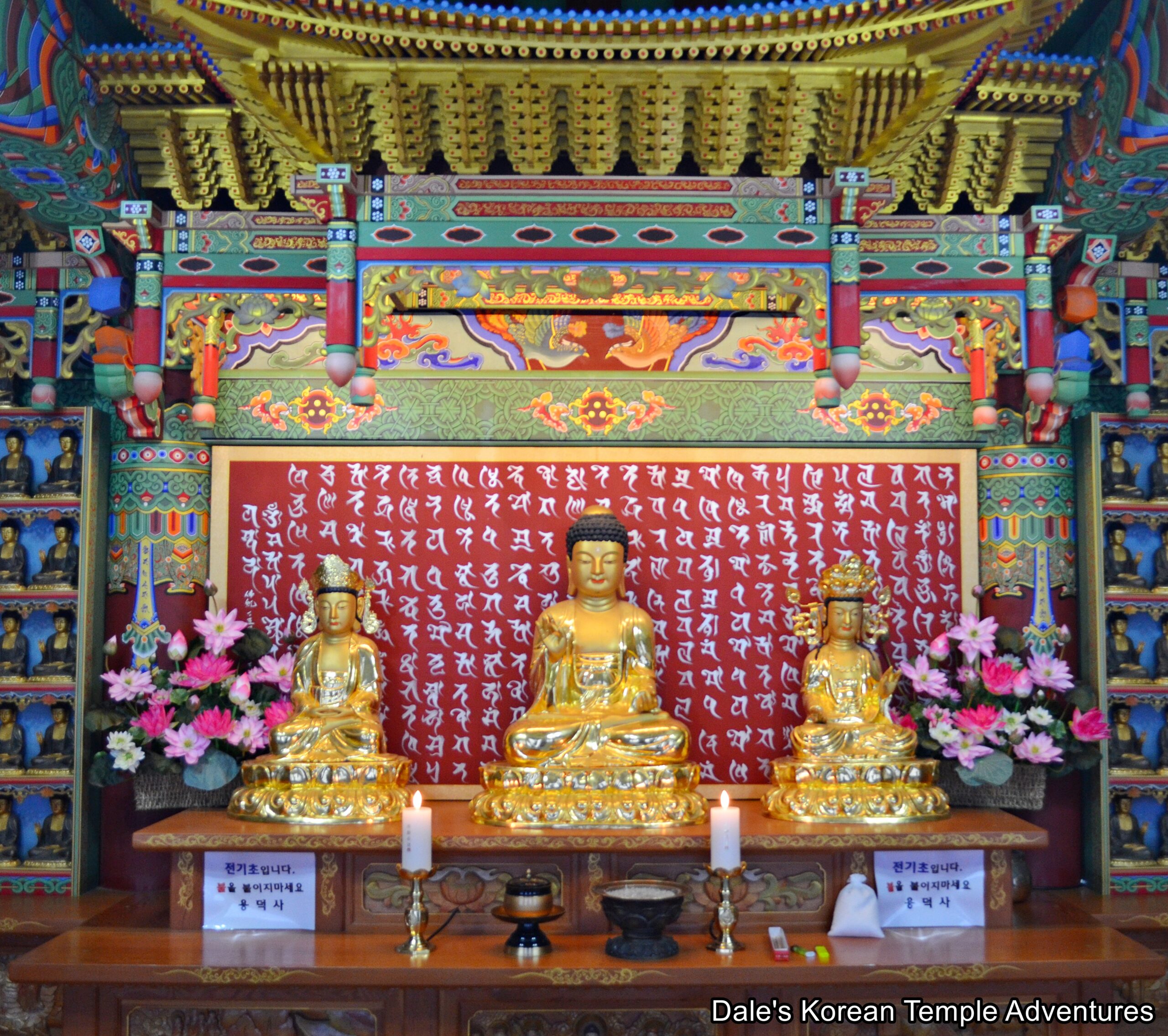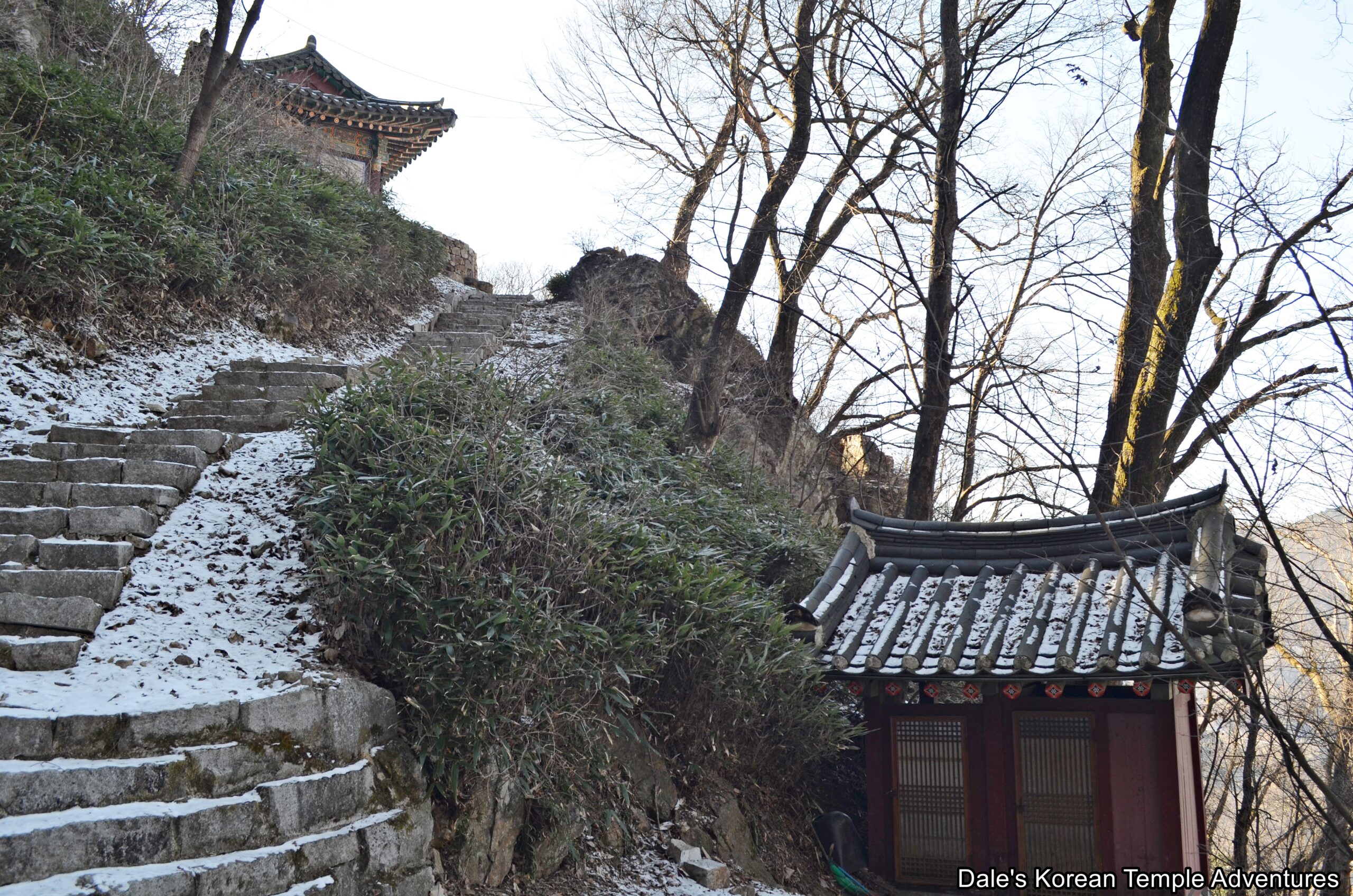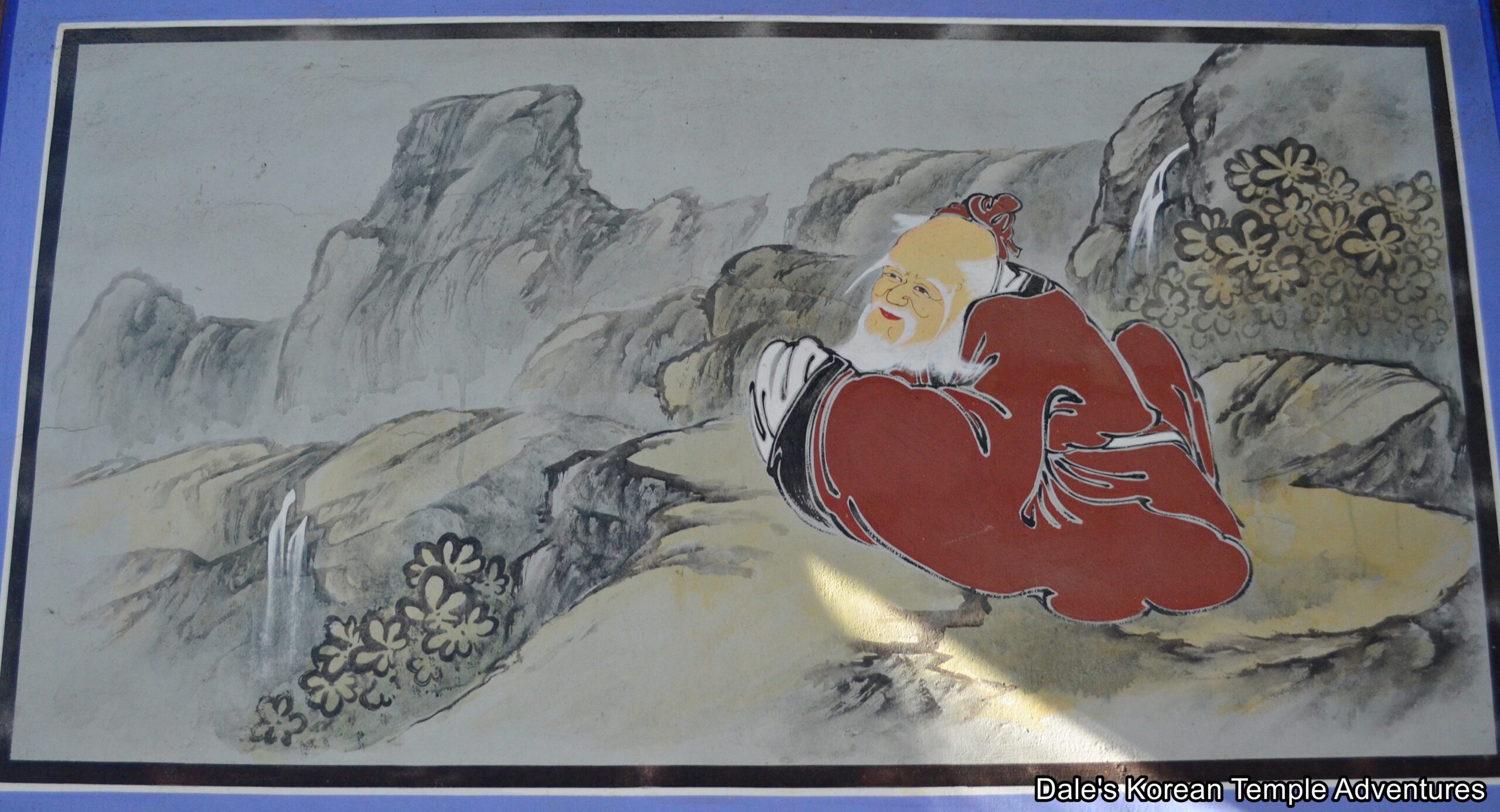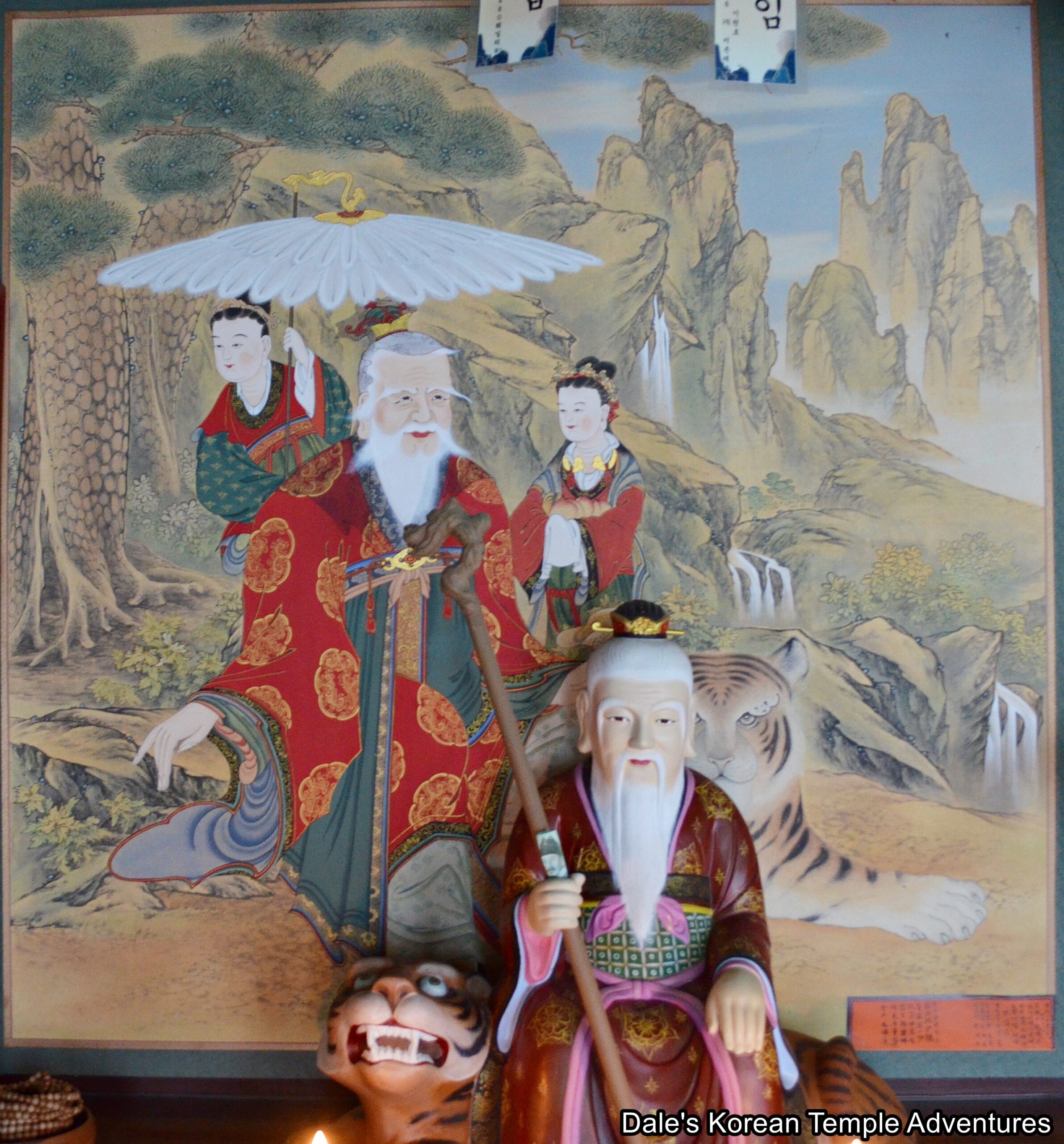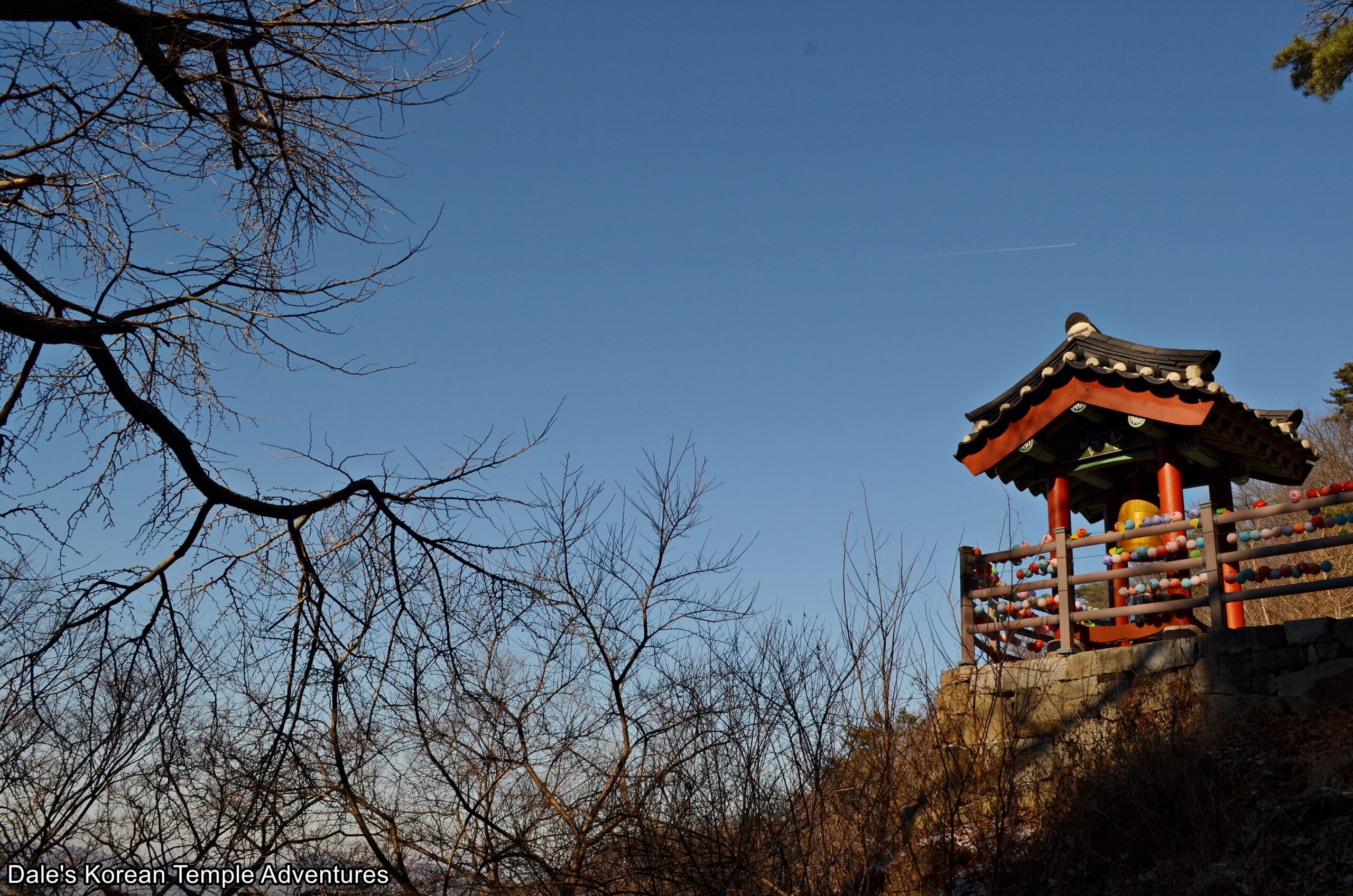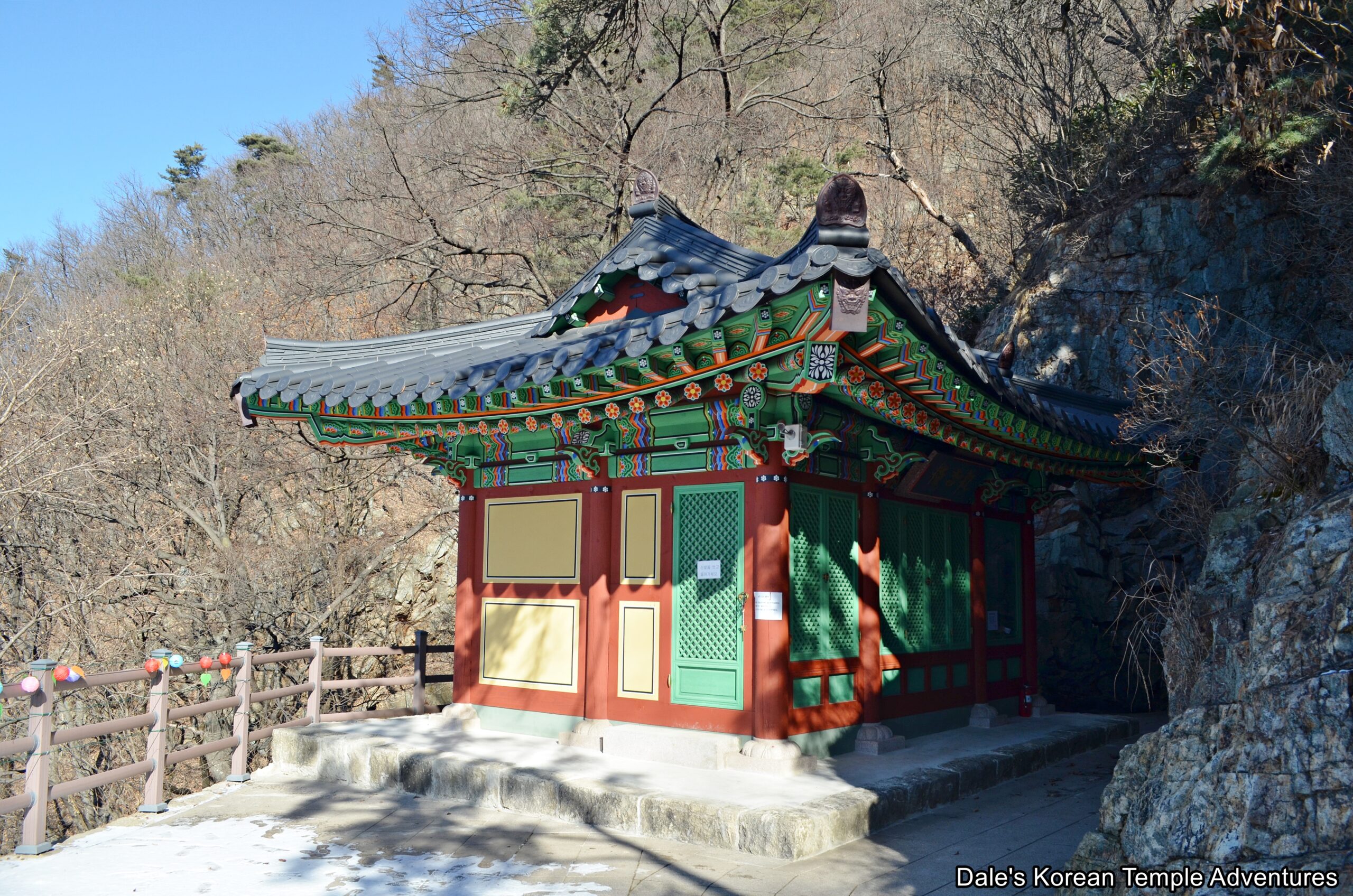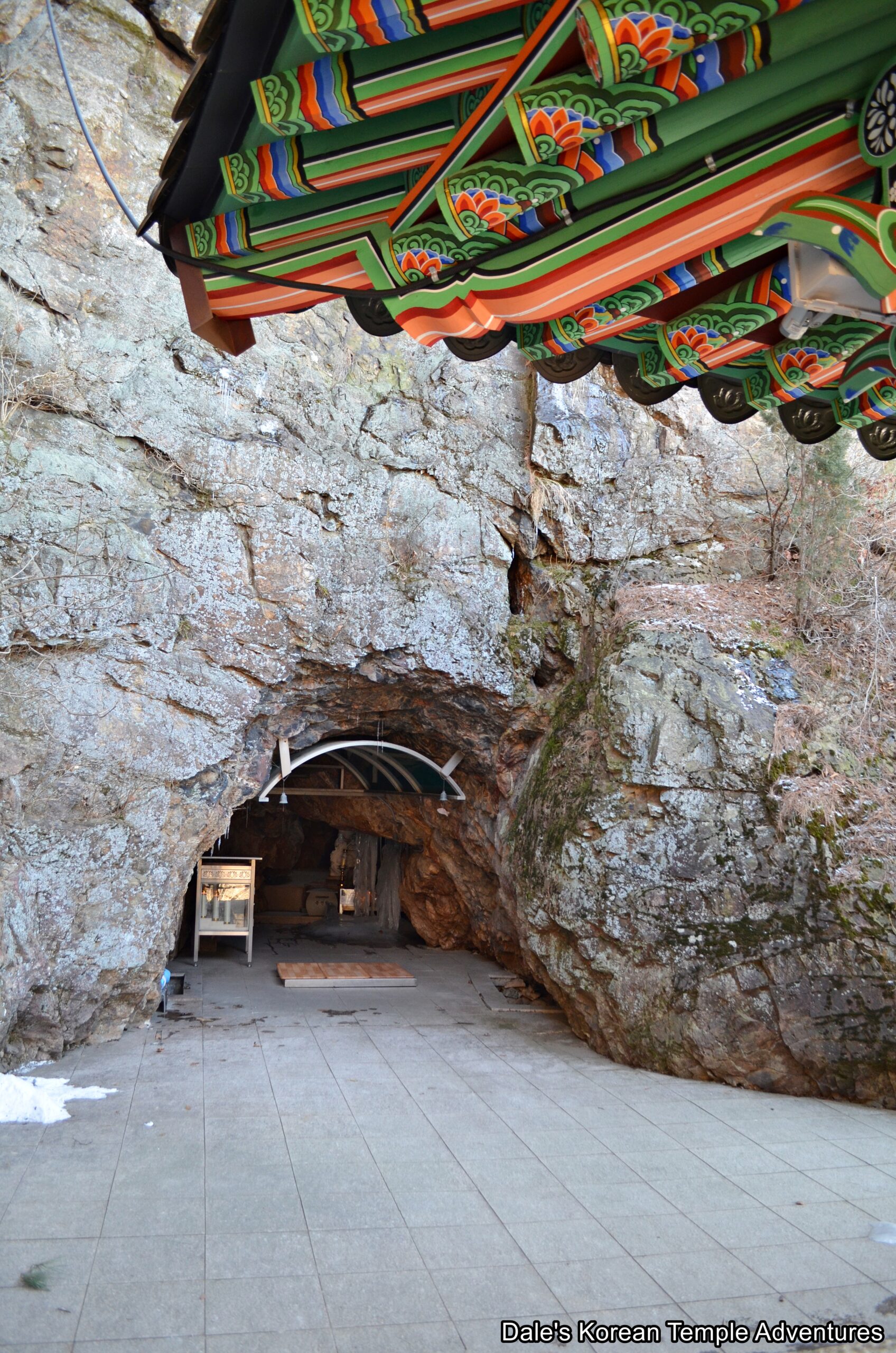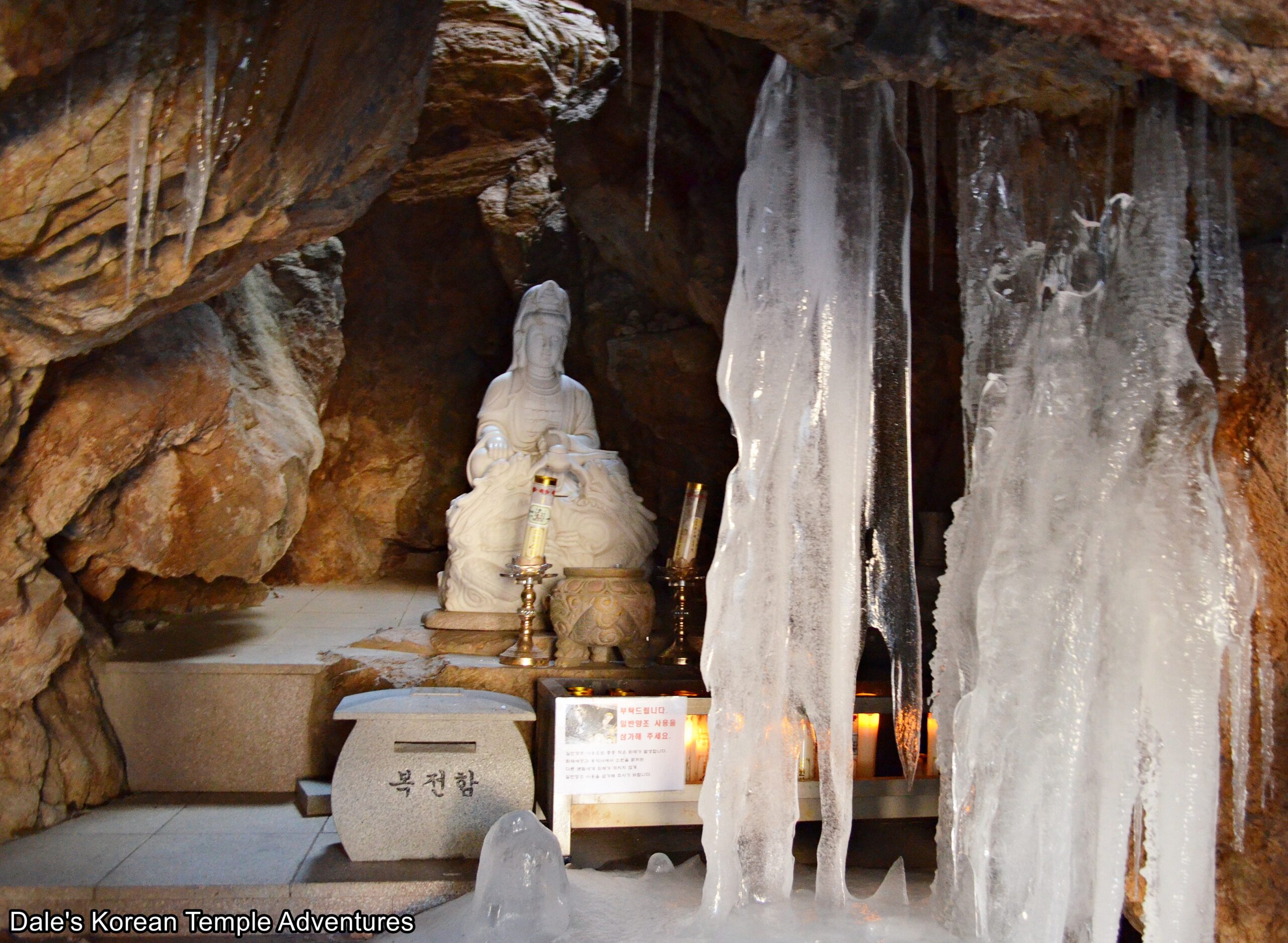Yongdeoksa Temple – 용덕사 (Yongin, Gyeonggi-do)
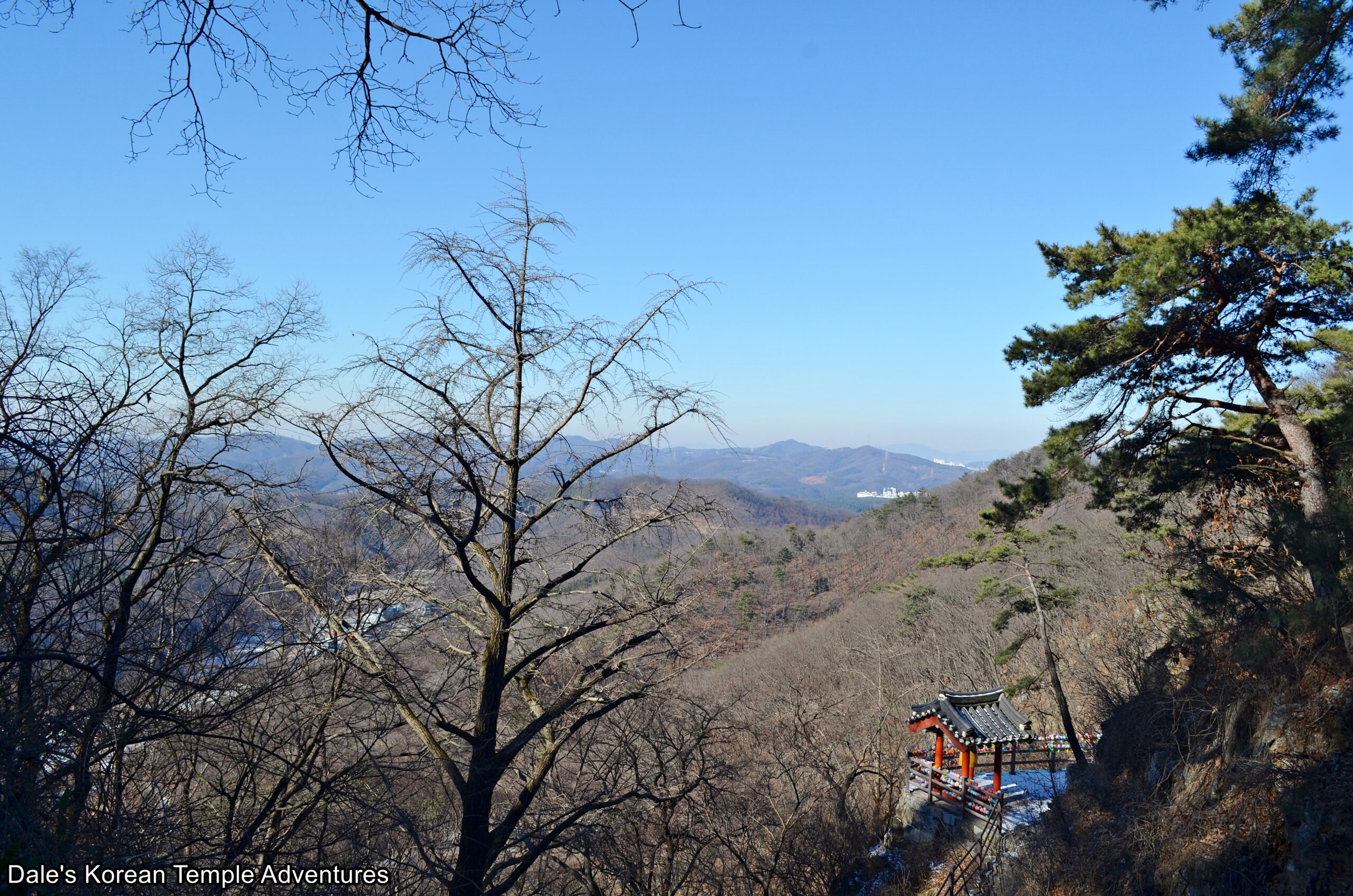
Temple History
Yongdeoksa Temple is located to the west of Mt. Gulamsan (345.8 m) and to the south of Yongin, Gyeonggi-do. Yongdeoksa Temple was first founded 1,300 years ago. It was first built by Yeomgeo-seonsa (?-844 A.D.) during the reign of King Munseong of Silla (r. 839-857 A.D.). It was later rebuilt by Doseon-guksa (826-898 A.D.). According to a temple myth, there were three iron figures that were used to help suppress the strong spirit of the mountain.
According to “The Record of Repairing Yongdeoksa Temple,” from “The Record of Contribution of Buddha Food Paddy Field,” which was written in 1914, Yongdeoksa Temple was reconstructed by the monk Seokdam-seonsa in 1792. It was later rebuilt in 1825 by the monk Jeongsa. And it was rebuilt, once more, in 1884 by the monk Seongwol. Also of note, most of the rice fields where Yongdeoksa Temple is located was recorded to have been owned by Yongdeoksa Temple. This helps highlight just how strong the temple remained until the end of the Joseon Dynasty (1392-1910).
However, during Japanese Colonial Rule (1910-45), the temple barely remained in existence. However, and through the efforts of the monk Seonghyo, who was appointed to be the abbot of the temple in May, 1998, Yongdeoksa Temple underwent a large scale reconstruction. Over time, the Iljumun Gate, the Mireuk-jeon Hall, the Yosachae (monks’ dorms), the Daeungbo-jeon Hall, the Samseong-gak Hall, and the Geukrak-jeon Hall were all built at Yongdeoksa Temple.
In total, Yongdeoksa Temple is home to just one protected property. It’s the “Stone Standing Buddha of Yongdeoksa Temple,” which is Cultural Properties Materials #111.
Temple Myth
Yongdeoksa Temple is known as the “Guram Temple” because there is a large cave up in the mountain. This cave is connected to a myth at the temple about a dragon that possessed a cintamani (a wish-fulling jewel). This dragon reached 1,000 years of age, and it lived in a rocky cave, where the upper courtyard of Yongdeoksa Temple is now located. This dragon gave a girl his cintamani, who had been offering devout prayers to help cure her father of his illness.
Since her father fell critically ill, the girl came to realize that the only way to cure him was to come into possession of a cintamani from a dragon that lived on Mt. Seongnyunsan. This girl went to the dragon and pleaded with this dragon for his cintamani. The dragon firmly refused to hand it over to the girl, since it was important to the dragon’s very life. However, the dragon was moved by the girl’s earnest request. In fact, the girl went so far as to offer her life, if the dragon was to give her the cintamani to help cure the girl’s father. So the dragon promised to give his cintamani to the girl stating, “I might be able to ascend to heaven after a thousand years, if I give you this cintamani. So I will give it to you after seeing your earnest love for your parent, so go and heal your father.”
However, at this very moment, when the mouth of the dragon touched the girl to give her the cintamani, an arrow shot by a hunter from down in the valley struck the dragon in the eye. The dragon would die as a result of the amount of blood that it lost. Along with the injury to the eye, the cintamani melted away. As a result, the girl could no longer cure her father with this wish-fulfilling jewel.
After the dragon died, the girl now prayed for the rebirth of the dragon. So over the next three days, even without taking so much as a sip of water, the girl prayed for the dragon to recover. Finally, the girl fell as she devoutly prayed for her father’s recovery. The earnestness with which the girl prayed reached the Buddha, who helped cure the girl’s father’s illness.
After some time, an old monk came to Mt. Seongnyunsan. With him, he brought wood and eventually placed it at the entry to the dead dragon’s cave. Originally, the monk had wanted to use the wood to help rebuild a temple at Seonbang. However, and over time, people decided to build a temple in front of the cave instead of at Seonbang. The reason for this change is that the people came to realize that it was better to build the temple in front of this dead dragon’s cave and receive the benevolence from the dragon, then it was to rebuild a temple at Seonbang. And hopefully through these efforts, and much like the devout girl, people would receive the benevolence of the Buddha.
In addition to a shrine hall being built in front of this dead dragon’s cave, a Geukrak-jeon Hall was built nearby to also help alleviate the pain of those suffering. It’s also said about the spring water that flows on either side of the dead dragon’s cave that it gives off a strong sense of spirituality and healing.
Temple Layout
Past a collection of houses and up a side-winding mountain road, you’ll first come across the Iljumun Gate that introduces you to the rest of the temple grounds. The Iljumun Gate’s pillars are adorned with the Four Heavenly Kings. And the signboard is curved and is bookended by a pair of fierce dragonheads. Both the woodwork and the dancheong colours are stunning on this entry gate.
Continuing up the mountain road, you’ll next come to the temple parking lot and the lower courtyard at Yongdeoksa Temple. The first of the shrine halls is the Daeungbo-jeon Hall. The front of the building is occupied by a pair of older stone pagodas. Both are three-story structures. As for the exterior of the main hall, it’s adorned with two sets of paintings. The lower set is a beautiful collection from the Shimu-do (The Ox-Herding Murals), while the upper set belongs to the Palsang-do (The Eight Scenes from the Buddha’s Life). Stepping inside the Daeungbo-jeon Hall, you’ll find a triad of statues resting on the main altar. The central image is that of Seokgamoni-bul (The Historical Buddha), who is joined on either side by two standing images of Munsu-bosal (The Bodhisattva of Wisdom) and Bohyeon-bosal (The Bodhisattva of Power). The triad rests under a large, golden canopy. And on either side of the main altar are 55 miniature statues of the Nahan (The Historical Disciples of the Buddha), making for a collection of 110 statues. Rounding out the interior of the main hall is a Jijang-bosal (The Bodhisattva of the Afterlife) painting hanging on the far right wall, while there’s a Shinjung Taenghwa (Guardian Mural) hanging on the far left wall.
To the left of the Daeungbo-jeon Hall, you’ll find the monks’ dorms and administrative office. And to the right of the Daeungbo-jeon Hall, and past a set of stone stairs, is the temple’s Mireuk-jeon Hall. The exterior walls to this hall are adorned with murals of various Buddhas and Bodhisattvas including those of Seokgamoni-bul, Jijang-bosal, and how the stone statue of Mireuk-bul was first discovered. The statue housed inside this hall, which is officially known as the “Stone Standing Buddha of Yongdeoksa Temple,” is believed to date back to the early Goryeo Dynasty (918-1392). And while the statue dates back to this time period, it appears as though it preserves the style from the Unified Silla Dynasty (668-935 A.D.). The statue has a shaved head with a topknot on top of its head. This topknot is meant to symbolize the wisdom of the Buddha. The statue has an oval face with relatively realistic features. The neck is marked with three thick ridges. These ridges, which are known as “samdo” in Korean, are also meant to symbolize the wisdom of the Buddha. The right hand is lifted to its chest, while also holding a lotus bud-shaped boju (jewel). The left hand, on the other hand, is making a mudra, which is meant to signify the promise to fulfill the desires of humankind. It’s assumed to be that of Mireuk-bul (The Future Buddha); however, it’s difficult to determine just what Buddha it is meant to represent based upon its appearance and mudra.
To the south of the Mireuk-jeon Hall is the Jong-ru Pavilion. Housed inside this bell pavilion is a large, colourful bronze bell. Rather interestingly, the bronze bell has been accented with paint along parts of its exterior. And atop the bronze bell, you’ll find a colourful image of Poroe (The Dragon that Adorns the Top of the Temple Bell). Also, and something to keep an eye out for, have a look at the butt end of the wooden striker. If you look close enough, you’ll find one of the most beautiful painted examples of a Gwimyeon (Monster Mask) in Korea.
Back at the previously mentioned pathway to the east of the Daeungbo-jeon Hall, and past the modern five-story pagoda to the rear of the main hall, you’ll find an uneven set of stone stairs that leads towards the upper courtyard at Yongdeoksa Temple. Along the way, you’ll find a monorail set of tracks that lead up to the upper courtyard. I wondered how the monks would get the altar food, rice and candles up to the upper courtyard shrine halls, and my inquiry was answered with this monorail.
Having made your way up the precarious stone stairs, especially in winter, you’ll find three shrine halls. The central shrine hall is the aforementioned Geukrak-jeon Hall. The ridge on which the Geukrak-jeon Hall is situated enjoys a commanding view of the valley below and the city of Yongin off in the distance. The front floral latticework is stunning, and the exterior walls of the shrine hall are adorned with murals from the foundation myth about the girl and her dragon. Stepping inside the Geukrak-jeon Hall, you’ll find a main altar occupied by a triad of statues. The central image is dedicated to Amita-bul (The Buddha of the Western Paradise), while the accompanying images are those of Gwanseeum-bosal (The Bodhisattva of Compassion) and Daesaeji-bosal (The Bodhisattva of Wisdom and Power for Amita-bul). The triad is backed by white script on a red background, while the rest of the interior is occupied by statuettes of the Buddha of the Western Paradise.
Down the stone stairs, and now to the right of the Geukrak-jeon Hall, you’ll find the Samseong-gak Hall. This shaman shrine hall enjoys an even clearer view of the valley below and the city of Yongin off in the distance. The exterior walls are adorned in stylized paintings of Sanshin (The Mountain Spirit) and Dokseong (The Lonely Saint). Stepping inside the shaman shrine hall, you’ll find a triad of paintings. In the centre is a painting dedicated to Chilseong (The Seven Stars). Joining this painting to the right is a mural dedicated to Dokseong, while to the left is a painting of Sanshin. In this painting, Sanshin rests under a white, feather umbrella held by a dongja (attendant).
And finally, and to the far left of the upper courtyard, you’ll find a shrine hall that looks out towards a cave. Before coming to this shrine hall, you’ll find a small wooden pavilion that houses a golden bell. As for the cave that the shrine hall looks out towards, this is the cave from the temple myth. Inside the shrine hall, there is a wall of glass that looks out towards the cave. So instead of having altar statues or paintings, and reminiscent of the Daeung-jeon Hall at Tongdosa Temple, the shrine hall simply looks out towards the cave from the myth. Housed inside this cave is a statue of Gwanseeum-bosal. And the statue is bathed in light from an opening in the ceiling of the cave. During the winter, ice forms on the walls of the cave.
How To Get There
From the Yongin Intercity Bus Terminal, you should board Bus #22. The bus ride should take about 25 minutes over 25 stops. You’ll need to get off at the “Yongdeoksa, Jaaewonap hacha – 용덕사, 자애원앞 하차” bus stop. From where the bus drops you off, you’ll need to follow the signs the rest of the way. The walk should take about 22 minutes over an 850 metres distance. The walk can be rather steep in parts.
Overall Rating: 8/10
There is a lot to enjoy about this old temple that has recently been rebuilt. Of course, the temple and its buildings centre around the cave and its myth. The climb towards the upper courtyard can be a bit tricky, but it’s definitely worth it, especially when you crouch down in the dead dragon’s cave. Also of interest in the upper courtyard are the exterior wall paintings of the Geukrak-jeon Hall, as well as the views from the Samseong-gak Hall. As for the lower courtyard, the paintings around the Daeungbo-jeon Hall and the artistry in and around the Jong-ru Pavilion are pretty special, as well. Also while in this area, have a peek in at the “Stone Standing Buddha of Yongdeoksa Temple” inside the Mireuk-jeon Hall. Yongdeoksa Temple is a wonderful temple to explore.
